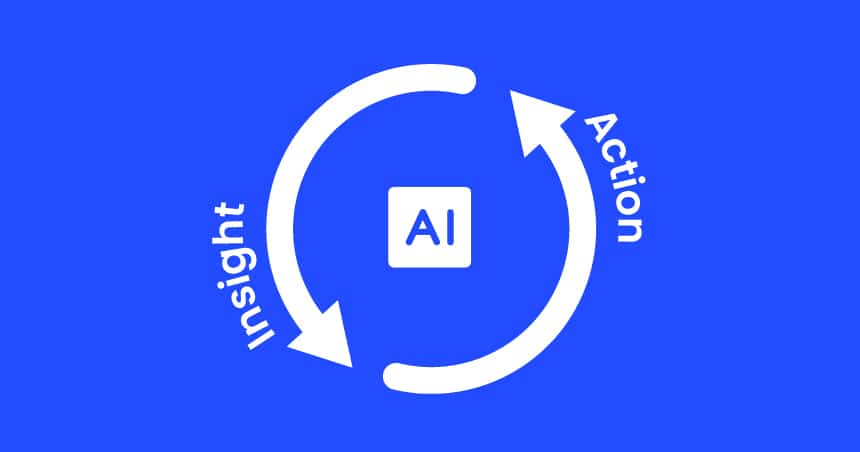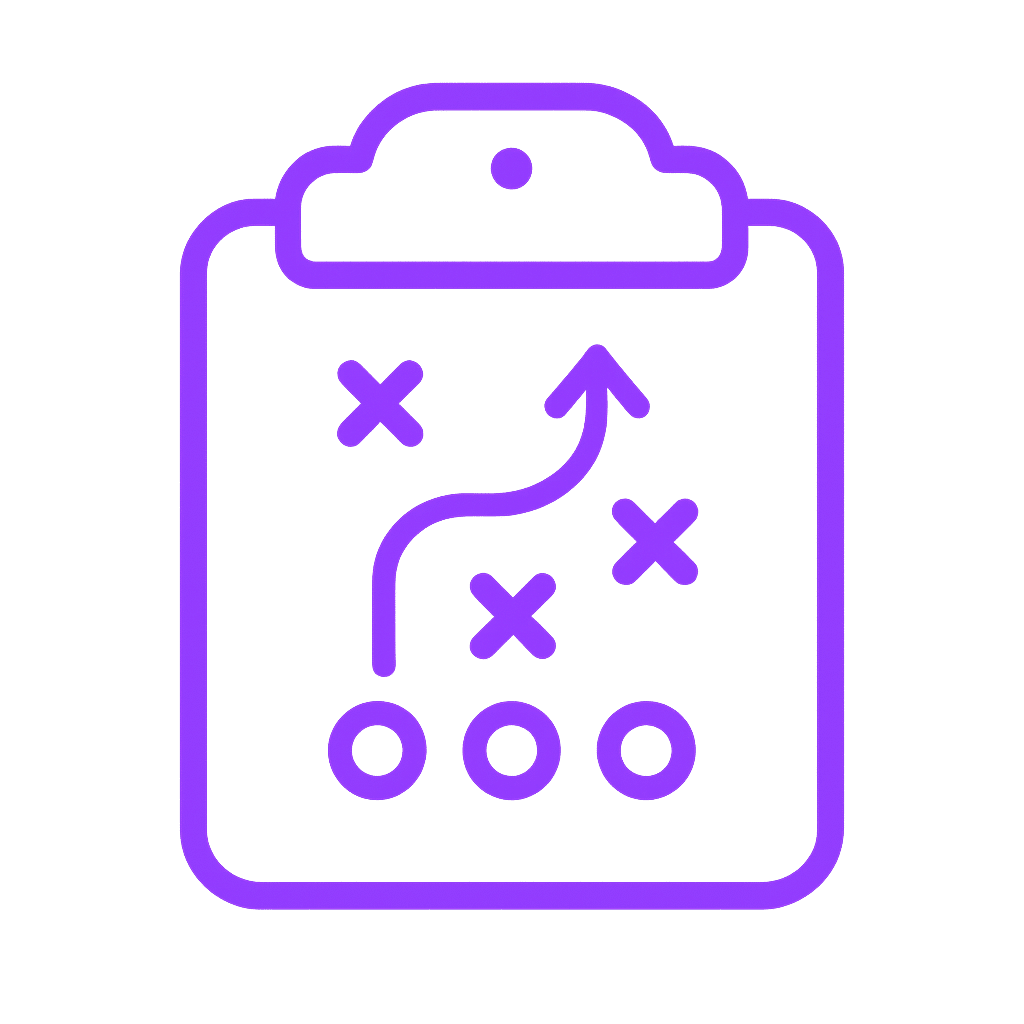
TL;DR
Traditional growth playbooks are failing because they’re too rigid for today’s fast-moving, signal-rich environment. The companies winning in 2025 are feedback-driven, data-informed, and strategically flexible. This blog unpacks the five most costly growth strategy mistakes – from chasing trends without fit to treating strategy like a once-a-year event, and offers AI-powered ways to fix them.
Growth used to follow a pattern. You’d map out the year, plan your quarters, and execute against it. Neat, linear, dependable. But those days are long gone.
Now? Growth is unpredictable. It loops, adapts, and constantly adjusts.
The old playbooks built on twelve-month funnels and five-year forecasts haven’t failed because they were flawed. They’ve failed because the market no longer plays by those rules.
Look around. AI shifts how buyers behave, and it does it faster than most go-to-market teams can react. Customer expectations aren’t waiting for your next planning cycle. Feedback pours in constantly, but it rarely moves across teams in a way that drives change.
In this kind of environment, speed isn’t the competitive edge anymore. Adaptability is.
The companies thriving today are doing more than moving fast. They’re moving with awareness. They’re building growth strategies that are responsive, rooted in signal, and flexible enough to shift course without losing direction.
They’ve stopped relying on fixed funnels and started building feedback loops. Forecasts aren’t treated as absolutes, but rather as starting points to be adjusted in real-time. Gut instinct isn’t ignored, but it’s sharpened by pattern recognition and informed by actual data.
Something else has shifted, too. Strategy is no longer a static plan that lives in a slide deck. It’s a living system, updated regularly, built directly into the weekly rhythm of product, marketing, and revenue teams.
Some do this with in-house tools. Others use platforms like ImpelHub. Either way, the shift is clear.
Growth today doesn’t come from sticking to a script. It comes from sensing what’s changing and having the systems in place to respond.
What are the Most Common Strategic Mistakes Companies Make? (And How to Avoid Them)

Most teams aren’t falling short because they lack drive. The real issue? Their strategies haven’t kept pace with the world around them.
Markets are moving faster, but a lot of growth plans are still stuck in last year’s assumptions. The result is friction, wasted time, missed signals, and momentum that never quite clicks.
Let’s examine five of the most common strategy mistakes. They’re all solvable, but if left unchecked, they quietly undermine growth.
Mistake #1: Chasing Trends Without a Strategic Filter
Sometimes, it doesn’t even feel like a decision. A new tech trend hits the headlines. Your competitors rush to adopt it. And suddenly you’re in a room being asked, “So… what’s our AI play?”
The pressure to keep up is real. But what’s the cost of following a trend that doesn’t fit your product or your customers? That cost is much harder to recover from.
We saw this play out with the AI rush in 2023. Startups raced to bolt machine learning onto existing products, hoping to catch a wave. They got clicks. They got a short-term buzz. But most couldn’t keep users engaged, because the AI didn’t solve a meaningful problem. It just sounded impressive.
That’s the danger. If the trend doesn’t align with your strategy, it can throw you off. Your team gets distracted. Your users get confused. And your core message starts to fade.
Before jumping in, slow down and ask a few questions:
- Is this something our top customers are requesting?
- Can we build this without derailing our roadmap?
- Will it still matter six months from now?
Practical ways to check fit:
- Use Google Trends or Exploding Topics to measure early signal strength.
- Tools like FoeScan can help you assess whether competitors are gaining real traction or just experimenting.
- Monitor internal feedback from demos, sales calls, or user reviews to see if customers are even talking about it.
Not every trend is your trend. Don’t chase them blindly. Strategy isn’t about being first. It’s about being right for your audience.
Mistake #2: Outdated or Shallow Customer Segmentation
Segmentation used to be simple. You’d slice your audience by industry, company size, or job title and build your campaigns from there. It worked, for a while.
But buyer behavior has moved on. And if your strategy hasn’t, you’re probably leaving real revenue on the table.
Top teams today don’t stop at designations or demographics. They dig deeper. They watch how people actually behave, where they click, when they leave, what catches their attention, and how their intent shifts. That’s where real segmentation starts to drive real growth.
Behavior-based segmentation can lift ROI, lower acquisition costs, and help you spot opportunities you’d otherwise miss. But too many teams are still relying on static personas that were built in a workshop last year and haven’t been touched since.
There are also segments hiding in plain sight. For example:
- Lurkers – people who never fill out a form but keep coming back to your site
- Window shoppers – visitors who bounce after multiple visits but show clear interest
- Passive referrers – users who never buy, yet influence others who do
These groups aren’t ignored because they lack value. They’re ignored because they don’t fit into the traditional buckets. That’s the trap.
If your cost of acquisition is rising and your lead quality is dropping, your segmentation probably isn’t wrong; it’s just incomplete.
Tools worth exploring:
- FanScope can help blend psychographics with behavioral signals to identify hidden patterns.
- HubSpot or Segment can tag and track multi-session user behavior.
- AI-powered clustering tools can surface behaviors that correlate with big deals, like research patterns before enterprise signups.
Great segmentation isn’t just about grouping people. It’s about recognizing behavior, predicting intent, and responding with relevance.
Mistake #3: Weak or Static Demand Forecasting
If your forecasting still relies on last quarter’s pipeline velocity and a gut feel for what might close, you’re leaving room for blind spots. Big ones.
The market shifts faster than ever. Buyer behavior is more volatile. And yet, many teams still treat forecasting like a math problem, not a strategy conversation.
The reality is this: outdated forecasting can quietly derail your entire go-to-market engine. It causes teams to over-hire, under-prepare, or misallocate budget. That ripple hits everything from marketing campaigns to sales capacity to product roadmaps.
The problem isn’t forecasting itself. It’s locking into assumptions that can’t keep up.
Take the post-COVID recovery phase. A number of consumer electronics brands predicted a smooth rebound to pre-2020 demand levels. But reality had other plans. Supply chains were a mess. Hybrid work spiked unexpected product categories. Consumer sentiment was jittery. As a result, many brands ended up overproducing; others couldn’t keep up, missing the mark by 30 to 50%. Not because they lacked insight, but because they were planning as if nothing had changed.
That’s the cautionary tale. In this economy, assumptions expire fast.
Modern revenue leaders are shifting how they forecast. They’re not just looking at pipeline volume. They’re asking smarter questions:
- Which segments are converting faster than expected?
- Where are deals consistently stalling, and why?
- Are there emerging patterns in buyer intent data that signal a market shift?
The winning companies are not just looking at close rates or deal stages anymore. They’re blending that with real-time signals like content engagement, product usage, competitor activity, and even macroeconomic factors. That gives them a forecast that’s not just accurate but adaptive.
One missed insight can snowball into a missed quarter. But when you forecast with both data and context, you’re not guessing anymore. You’re navigating.
Tools worth exploring:
- Machine-learning tools like Prophet (built by Meta) and Amazon Forecast help model complex trends with more nuance.
- Live planning environments, like ImpelHub’s dynamic Battleboard™, give teams room to test scenarios and course-correct quickly.
- Cross-functional input ensures the forecast reflects what’s actually happening, not just what the spreadsheet hoped would happen.
Strong forecasting isn’t just about hitting the number. It’s about knowing what’s coming. And being ready when the terrain changes.
Mistake #4: Making Decisions Without Solid Data
There’s a certain allure to the “gut feeling” approach. We all want to believe that bold instincts can lead to breakthrough moves. But the reality? When those instincts aren’t grounded in data, they often lead to costly missteps.
Too often, teams move fast without slowing down to validate. Instead of anchoring decisions in what users actually need, they fall into common traps like:
- Launching features based on internal enthusiasm rather than real customer demand.
- Spending heavily on channels without knowing if they’ll actually convert.
- Letting scattered anecdotes from sales calls guide priorities, instead of structured, repeatable feedback.
Each of these adds noise. Over time, that noise drowns out the signals that truly matter.
In today’s data-rich world, flying blind is no longer brave. It’s reckless.
Smart teams don’t just collect data; they triangulate it. They mix first-party product usage, customer sentiment, and competitive intelligence to create a fuller picture of what’s actually working.
That means combining tools and signals:
- Web behavior and referral benchmarks from platforms like SimilarWeb.
- User feedback from tools such as Canny or internal channels, flagging recurring issues and feature requests.
- Competitive tracking through Crayon or FoeScan to spot new product moves and positioning shifts.
- Qualitative insights from win/loss interviews and detailed surveys give context to the numbers.
Here’s a simple rule. If a decision feels daring but you can’t trace it back to real user data, market insights, or historical patterns, it’s probably a guess. Not a strategy.
Mistake #5: Treating Strategy as a One-Time Event
For many companies, strategy still feels like something you set once a year and revisit only when things go sideways. There’s a big kickoff, a glossy slide deck, maybe even a team offsite. Then, it gets filed away and slowly drifts out of sync with what’s actually happening in the market.
That kind of rigidity is a problem, especially now, when everything from buyer behavior to channel performance can shift in weeks, not quarters. What seemed solid in January might feel outdated by March. Yet many teams stay locked into static annual plans or inflexible OKRs, unable to shift gears until the next big review.
Here’s what strategic inflexibility tends to look like:
- Teams sticking to the plan, even when the numbers aren’t moving
- Insights from sales or customer success failing to influence the roadmap
- Product teams executing blindly, without pausing to revalidate
- Quarterly reviews are happening, but actual decisions are lagging far behind.
So what’s the better approach?
Strategy needs to live and breathe. The most agile companies today are moving away from once-a-year planning and toward systems that evolve in real time.
What that looks like in practice:
- Weekly retros that don’t just summarize; they reshape priorities
- Scenario planning triggered by actual events, not calendar invites
- Decision logs, version-controlled strategy maps, and flexible tools like Battleboards to visualize the way forward
- A shared strategic lens across product, marketing, and revenue, so no one’s operating in the dark
The goal isn’t to predict the entire future. It’s to stay responsive to what’s unfolding now. When your strategy can flex without falling apart, that’s when you find real momentum. Growth stops being an ambition and starts becoming a rhythm.
What are the Most Commonly Overlooked Mistakes That Derail Growth?
Some growth killers don’t show up with alarms. They creep in quietly, draining momentum, inflating CAC, and weakening retention until the business feels stuck. These are the slow leaks in your growth engine. Often invisible in dashboards, yet deeply responsible for scale failure.
Let’s unpack six of the most quietly dangerous and frequently ignored mistakes.
1. Overdependence on Paid Channel
Paid media feels like the fastest path to traction, and early on, it often is. But over time, this dependence becomes a strategic risk.
Here’s what we see when paid becomes the default engine:
- You overpay for cold leads with low conversion intent.
- You react to algorithm shifts instead of owning your pipeline.
- You underinvest in channels that grow value over time.
Sustainable growth portfolios don’t just rent attention; they build it.
Balancing owned channels (SEO, email, content) with earned ones (PR, community, brand advocacy) compounds visibility and lowers CAC. Treat paid media like a boost button, not the fuel tank.
2. Ignoring the Post-Purchase Experience
Conversion is not the finish line. It’s the entry point. Yet too many teams treat “Buy Now” as the end of the customer journey.
Weak onboarding, unclear success paths, or disengaged support leave even your best customers drifting.
To fix this, ask:
- What early actions predict churn in the first 7–14 days?
- When does buyer’s remorse typically hit?
- What moments deliver delight, not just delivery?
Predictive churn models, post-sale surveys, and proactive success milestones aren’t just retention tactics. They’re growth levers.
When you treat users like customers, they leave. When you treat them like members, they stay.
3. No Unique Growth Engine
It’s tempting to follow the growth playbooks of market darlings. But Airbnb’s engine won’t work for your niche SaaS. Canva’s virality doesn’t translate to your B2B fintech.
Chasing someone else’s blueprint is strategy cosplay.
Instead:
- Build loops rooted in your real customer behavior.
- Experiment with micro-flywheels like retention → referral → expansion.
- Scale only what proves durable without constant handholding.
The best growth engines feel natural, not forced, because they emerge from fit, not fantasy.
4. Undefined or Static ICP
When CAC is high or conversions lag, chances are your Ideal Customer Profile (ICP) is either misdefined or outdated.
Effective ICPs aren’t just based on industry or headcount. They blend:
- Interview insights (why users buy, churn, hesitate)
- Firmographic and technographic filters
- Behavioral cues (e.g., repeat site visits, pricing page depth, demo intent)
Frameworks like FanScope help teams score-fit and intent, but the real unlock? Treating your ICP as a living model, refined quarterly, not frozen annually. The clearer your ICP, the clearer your decisions.
5. Siloed Teams, Fragmented Growth
Growth isn’t owned by marketing. It’s a multi-team sport, and when product, sales, and marketing move in isolation, momentum stalls.
Here’s what silos create:
- Sales feedback that dies in a spreadsheet
- Marketing campaigns misaligned with product capabilities
- Roadmaps shaped by hunches, not demand signals
Top companies build growth squads, cross-functional pods anchored to one shared metric (e.g., trial → activation). They share dashboards, OKRs, and rituals. Tools like Notion, ClickUp, or shared Battleboard-style maps make collaboration clear and easy. They cut through the friction. Insights flow freely. Decisions get made faster.
Growth alignment isn’t a once-in-a-while meeting. It’s a living system.
6. The Silence Rate
Sometimes the biggest red flag isn’t churn. It’s the indifference.
Silence is a signal. A loud one.
Track your silence rate:
- % of users who never engage after sign-up
- % of customers who cancel without ever using the product fully
- % of demo attendees who disappear without a “no thanks”
High silence means high blind spots in your strategy. Don’t wait for complaints; investigate the quiet.
How AI Can Help You Avoid These Mistakes

Let’s get one thing straight: AI doesn’t build your strategy for you. It won’t define your goals or hand you the big idea. But it does something just as valuable. It sharpens your view. It cuts through noise. And it helps your team learn and adjust faster.
The companies growing in 2025 aren’t just moving faster. They’re moving smarter. They’re using better signals. Making sharper calls. Closing the loop between insight and action before the window closes.
Where traditional teams often get bogged down in data noise, delays, and fatigue, AI-powered workflows offer the leverage to cut through the clutter.
Here are four practical ways AI is not just helping but transforming the way companies grow smarter:
1. Predictive Retention Models
Waiting for churn to happen means losing customers you might have saved. AI flips that script. It spots the signs early.
AI looks at signals like time spent on key pages, skipped onboarding steps, login drop-offs, or rising support tickets. When patterns shift, it raises a flag. That gives your team a chance to step in before the user checks out for good.
Maybe that’s a helpful nudge. A smarter upsell. Or just showing up with the right message at the right time.
Modern platforms now offer retention scoring at the individual user level, not just after the fact. With predictive flags embedded into CRMs or custom dashboards, your team can act in real time, rather than reacting too late.
2. NLP for Market Sentiment
Natural Language Processing, or NLP, does more than just flag happy or unhappy customers. It digs deeper. It sifts through thousands of data points, from reviews and customer support tickets to social media chatter, to capture emotional tone, emerging objections, and friction points in seconds.
This isn’t just about listening. It’s about strategic intelligence that uncovers:
- New pricing or onboarding objections before they become widespread
- Early signals of competitor threats or market shifts
- Customer feedback segmented by ideal customer profile or sales stage
Tools like ChatGPT, Crayon, or custom in-house models fine-tuned on your own data make deploying this insight easier than ever.
3. Auto-Generated A/B Testing Suggestions
Choosing what to test next can often feel like guesswork. AI-driven testing platforms remove much of that guesswork by recommending:
- Which homepage headlines resonate best with specific segments based on click history
- Which call-to-action phrasing drives higher conversion for different personas
- How to tailor onboarding or pricing language by region or customer type
Platforms like NextMove, used in loop-based strategy systems, score and rank ideas by predicted impact, cost, and relevance. That means your team focuses on the highest-value experiments, eliminating opinion bias.
The result is faster learning cycles and fewer wasted sprints.
4. How to Start Small (Without Overengineering)
You don’t need a full data science team. And you definitely don’t need a 12-month rollout.
Start small. Use simple AI tools that slip right into the way your team already works.
- Use ChatGPT for brainstorming ICP variations, drafting test copy, or generating FAQ content.
- Monitor trends and build predictive dashboards with Tableau Pulse or Looker.
- Prioritize experiments with NextMove-style platforms to decide what to test next.
- Set up tagging systems in Slack, Notion, or Insight360 to log signals for ongoing analysis.
The key is to see AI as an amplifier of your team’s insight. It is not a replacement for human judgment. Let your people lead the strategy while AI helps cut lag and increase precision.
What Key Metrics Indicate if Your Feedback Loop is Working?
Metric | What It Tells You | How to Track |
Feedback-to-Action Time | How quickly you respond to insights | Timestamp feedback in retrospectives or Insight360 |
Follow-Through Rate | How faithfully teams execute on feedback | Percentage of feedback items acted upon |
Silence Rate | Engagement health | Percent of segments not engaging or providing feedback |
Recurring Themes | Pattern recognition | Tag issues during postmortems and interviews |
Flywheel Repeat Rate | Strength of scalable loops | Percent of users who re-enter the loop post-conversion |
Final Thought

Ask any team that’s grown sustainably, and they’ll tell you: it’s not just about moving fast. It’s about removing the drag.
That drag shows up in small ways: misread signals, feedback that never makes it into action, or strategies built on yesterday’s assumptions. Over time, that’s what slows the flywheel.
Build your feedback loops right. Use signals that sharpen focus. Leverage AI-powered tools that cut the manual grind. Design adaptive workflows that shrink the gap between learning and doing. That’s exactly where platforms like ImpelHub come in, helping teams transform insight into action, and strategy into repeatable systems. That’s when growth feels smooth, less like pushing and more like compounding.
You don’t need more hustle. You need smarter loops. You need context that clicks faster, decisions that carry forward, and teams that aren’t guessing.
The edge in 2025 doesn’t go to the biggest or busiest team. It goes to the team that’s learning in real time, adapting faster than the market shifts.
That’s exactly why platforms like ImpelHub exist: not to chase trends but to help teams build strategy loops that stick. Insight in, action out, every cycle sharper than the last.
Because the next wave of winners won’t be the loudest, they’ll be the most adaptive!
Frequently Asked Questions (FAQs)
What exactly is a feedback loop in growth strategy?
A feedback loop is a cyclical system where output becomes input, insights from customer behavior, surveys, and usage inform decisions that drive action and improvement. It’s not just data collection; it’s a continuous cycle of learn → act → learn.
Why are feedback loops critical for scaling growth?
They offer a mechanism for real-time learning: improving customer delight, accelerating innovation, reducing churn, and aligning teams around evolving needs. Amazon, Netflix, and Airbnb became growth leaders by embedding feedback into their product loops and scaling based on those signals.
How do you design an effective feedback loop?
An effective loop should:
- Define clear objectives using SMART goals,
- Set up structured channels for gathering feedback (surveys, interviews, support tickets),
- Perform regular analysis (patterns, sentiment, root causes),
- And implement actions on priority themes with visible follow-through.
What are the most common pitfalls when using feedback loops?
Common breakdowns include:
- Collecting insights that go nowhere – lack of follow-up,
- Analysis paralysis – too much unprioritized data,
- Actions misaligned with real pain points,
- And loops that become static or drift into noise over time.
How do I measure feedback loop effectiveness?
Track metrics such as:
- Feedback‑to‑Action Time (how quickly insights trigger change),
- Follow‑Through Rate (what percent of flagged items are resolved),
- Silence Rate (portion of disengaged or quiet users),
- Recurring Themes and Flywheel Repeat Rate (how often users re-enter the cycle after conversion).
How do feedback loops intersect with growth loops or flywheels?
Growth loops – mechanisms where outputs feed back into acquisition or referrals – work best when powered by feedback. For example, content engagement → referral → more content engagement forms a compounding cycle when optimized with insight-driven adjustments.
Can feedback loops work across different functions (product, sales, employees)?
Yes! Effective feedback loops span multiple stakeholder groups:
- Customer loops inform product and UX enhancements,
- Employee/Team loops inform internal process improvements and engagement culture,
- Market and competitive loops inform strategic repositioning or messaging shifts.
At what rhythm should a feedback loop operate?
High-performing teams run loops in weekly, cross-functional rhythms:
- Weekly customer signal reviews,
- Quarterly refinement of segmentation and ICPs,
- Tactical retros control execution and adapt priorities in real time.
How do tools help scale feedback loops?
Tools help in collection, analysis, and action:
- Surveys and in‑app feedback (like NPS or Start/Stop/Keep),
- Sentiment and NLP tools to parse qualitative input,
- Dashboards or battleboards to visualize priority themes,
- And CRM or product tools (like Canny, Segment, FanScope) that tag trends or surface behavior-driven clusters.
How do you avoid overcomplicating feedback systems early on?
Start small:
- Focus on 1–3 objectives,
- Use straightforward loops (like simple surveys or weekly issue logs),
- Involve frontline staff and customers in defining issues,
- And scale incrementally – avoid building tools before seeing patterns or value.



